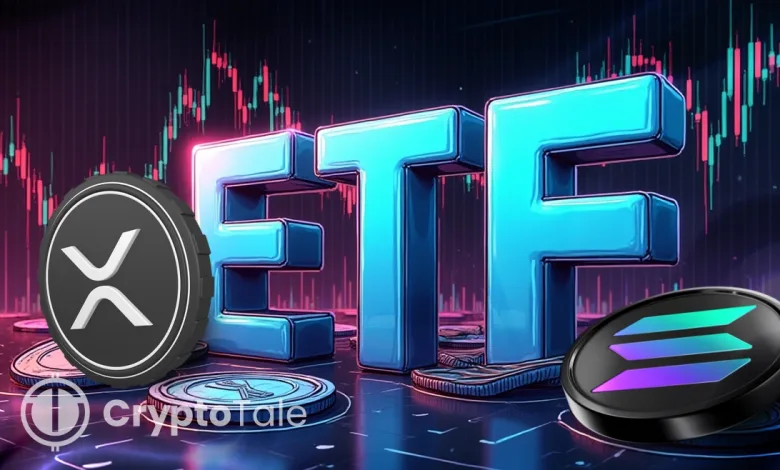Solana and Bitcoin Lead 155 Cryptocurrency ETF Filings

- SOL and BTC dominate U.S. ETF filings, showing a strong wave of institutional confidence.
- More than 35 assets are targeted as crypto investing transitions to regulated markets.
- Traditional finance groups prepare for an era of diversified crypto exposure in portfolios.
Senior Bloomberg ETF analyst Eric Balchunas has revealed that the United States currently hosts 155 crypto exchange-traded product (ETP) applications targeting 35 different digital assets. The data, compiled by Bloomberg’s digital asset industry researcher James Seyffart, marks a major expansion in institutional interest since early 2024.
According to Balchunas, both Solana and Bitcoin top the list with 23 filings each, followed by XRP with 20 and Ethereum with 16. The filings for “basket” ETPs, products bundling several cryptocurrencies, stand at 10, signaling rising investor appetite for diversified exposure.
Institutional Race Accelerates Toward Crypto Diversification
Balchunas shared a breakdown chart on X, describing the movement as a “land rush” that could result in more than 200 filings within the next 12 months. His data shows a growing shift among traditional finance firms to expand beyond Bitcoin and Ethereum. Litecoin records five filings, while Avalanche, Dogecoin, and Polkadot each have four. Meanwhile, SEI, Hedera Hashgraph (HBAR), SUI, BNB, and Cardano each have three, with a long tail of newer tokens—NEAR, Chainlink, INJ, Tron, BONK, HYPE, and Atom—holding one or two filings.
The increasing number of submissions reveals how the regulatory environment is slowly adapting to the growing cryptocurrency market. As frameworks in the U.S. evolve, asset managers are finding it easier to file for products that extend beyond traditional pairs, such as BTC and ETH. The competition among issuers for early market share has become more acute.
So, to be on the safe side, many are applying for the issuance of both single-asset and multi-asset products simultaneously. At the same time, investors will benefit from the influx of new opportunities through regulated investment vehicles. They won’t have to deal with crypto exchanges, but rather will get access to digital assets through brokerage accounts. However, the multiplication of ETPs will necessitate that investors take extra caution since each ETP is linked to different coins, hence, having different liquidity and regulatory clarity.
Balancing Investor Demand and Regulatory Readiness
While the surge signals growing confidence, most applications remain pending approval from regulatory authorities. Only a fraction will likely reach market launch depending on how authorities respond to the swelling queue. According to Balchunas, approval outcomes may depend on liquidity, transparency, and the issuer’s reputation.
Nate Geraci, president of NovaDius Wealth Management and host of ETF Prime, stated that traditional finance investors are unlikely to navigate numerous single-token ETFs. Instead, he said, they will likely choose index-based or actively managed crypto funds. “No way TradFi investors are ready to navigate all of these single tokens,” Geraci said. “They’re going to take a diversified, shotgun approach to an emerging asset class.”
Related: Eric Balchunas Highlights ETFs’ Crucial Role in Bitcoin’s Growth
From Niche to Mainstream: The New Institutional Frontier
The increase in ETP applications is indicative of a major transition from speculative crypto to structured adoption by institutions. Balchunas pointed out that the wide-ranging applications for 35 different tokens show that the interest of Wall Street is not temporary but rather strategic. The traditional finance companies are gradually integrating blockchain assets into the overall portfolio management, which is quite similar to the early stages of diversification between equities and bonds.
The critical question now is whether this momentum will actually cause a major change in the way capital flows into digital assets. What was once a small-scale experiment has now been transformed into a regulated, mainstream investment class that cuts across institutions, investors, and innovation, still on the same financial frontier.





